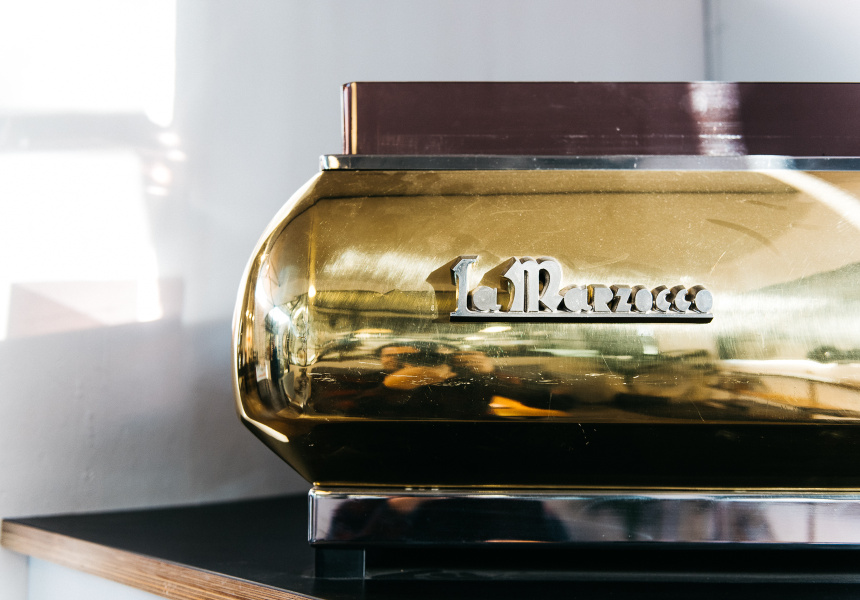Seven years back, Jets Langlands was working at the Melbourne outpost of New Zealand coffee roaster Allpress. It had been distributing La Marzocco espresso machines in Australia since 1999. One day, a team flew out from Italy to see how its brand was faring.
“It took us five minutes to come up with a list of the four or five machines in the city,” says Langlands, who now works as La Marzocco’s sales and marketing coordinator. “Now I could list 10 on one street.”
This is no empty boast. Australia is now one of the company’s best markets worldwide for La Marzocco. It’s hard to find a respected cafe in Melbourne without a machine. La Marzocco sells them to roasters wholesale, who then resell the machines with their coffee. Its current clients include Proud Mary, Seven Seeds, Small Batch, Market Lane, Campos, Toby’s Estate and Lavazza.
We think you might like Access. For $12 a month, join our membership program to stay in the know.
SIGN UPGiven this explosive growth, you could be forgiven for thinking La Marzocco is a young brand. In fact, it’s been going since 1927. In the years before, founding brothers Giuseppe and Bruno Bambi were busy building commercial kitchens in and around Florence, an area famed for the quality of its steel. Today La Marzocco manufactures 25 kilometres from Florence in a town named Scarperia, which has long been known as the Town of Knives.
With this heritage at their back, the brothers began designing stand-alone espresso machines, rather than just making custom units for their kitchen fit-outs. Within 12 years they’d filed a patent for a horizontal boiler, allowing several group heads to sit side-by-side and pour multiple coffees at once.
This was the first in a string of innovative designs dreamed up by the Bambis – designs that helped the company survive both World War II and a flood that ravaged Florence in 1966, legally releasing all of La Marzocco’s clients from debt repayments.
They were also enough to draw the attention of a guy called Kent Bakke 10 years later. Espresso machines had just reached Seattle, and the young American was keen to begin importing them. After flying to Italy and searching around, he settled on La Marzocco and went home with two machines in tow. The year was 1978.
Dealing with Bakke might be the best decision the Bambis ever made. Bakke later told them Starbucks was planning a massive expansion, and he had convinced it to put a La Marzocco in every new store.
“Kent rolled over to Italy and said, ‘I want 500 machines,’” Langlands says. “They just flat out said no.” The old-school operation simply didn’t have the capacity.
Even today, the machines are made at the one factory before being shipped out to Australia and re-tested. “We test the machines for at least eight hours each. We leave them running and do all the volumetric programming, which basically goes through and tests every function,” Langlands says. If a fault appears, the team fixes it in-house.
The machines are still handmade, so things do change from time-to-time, Langlands says. “We had one customer call and say, ‘Can’t you just drill the holes in the same spot every time?’ But it actually depends on the height of the guy drilling the holes.”
The pale brick warehouse is also used as a showroom. Though the company only sells direct to roasters, regular coffee fanatics are welcome to bring in some beans and indulge their curiosity, or else scout out a machine for the office.
It’s incredible that, after 87 years in business, this showroom was only formally established in April last year, when Allpress handed distribution rights back to La Marzocco. Jets says that although Allpress was always even-handed in its dealings with other roasters, it was time to ease the inherent tension of one coffee company supplying essential kit to competitors.
But if La Marzocco’s foray into America wasn’t a great success for the company, it filled a vital role in furthering the specialty coffee scene. Former La Marzocco employees in Seattle went on to found Slayer and Synesso, two of the company's biggest rivals.
These companies have built strong reputations, but they’ll never be able to match La Marzocco’s storied history. “Piero Bambi is 81 and he’s amazing," Langlands says. "He goes into the factory every day and makes coffee for people.
“Rumour has it he was the first person in the world to have a crema on an espresso. His uncle and his dad were making coffee, did the whole pump thing, and got all this foamy stuff on top of the coffee. They said, ‘What’s that?’ ‘I don’t know, give it to the kid.’ I think he was about seven at the time.
La Marzocco
104 Nicholson Street, Abbotsford
Hours
Mon to Fri 8am–4pm


